From Blum to Salice, What Are The Best Kitchen Cabinet Hinges?
Easily overlooked when specifying a kitchen, the cabinet hinge is a small item that does more work than almost any other item in the kitchen. Getting this choice right will bring years of customer satisfaction.
Kitchen cabinet hinges come in many different variations, each with a particular purpose. Many are concealed (when the door is closed), although traditional flush finial hinges are also becoming popular in inframe kitchens - see our cabinet door hinges. This article focuses on "concealed" or "Euro-style" hinges, which typically attach to the door using a standard-sized cup. The range can be split by door position (full overlay, half overlay or inset) by mechanism - standard sprung or soft-closing, by degree of opening, or brand. We start by explaining 3 types that vary according to how the door closes in relation to the carcase.

These concealed cabinet hinges close with a length of the door that is the width of the cabinet's carcase ‘overlayed’ to fully hide both the body and the hinge from sight. Full overlay hinges from our Blum or Salice brands will have 0mm of cranking.
This type is generally utilised when 2 cabinet doors are hung from the same partition in the carcase back-to-back as it were; they need a 9mm or 5mm crank angle.
See an example from the respected Blum brand half overlay hinge on this link.

Uses for inset hinges might be in the recent trend towards inframe kitchen doors. The doors are ‘inset’ within the side of the cabinet like a picture and glass within a picture frame.
You will generally need a cranking angle of 17mm or 15mm on these models; an example from the Salice range can be seen here.
A type of concealed hinge that is utilised where no right-angle cabinet side is available to fix onto with an angle of 95 degrees; available sprung and unsprung with Blumotion soft-close on Blum blind corner hinges.

Where a second cabinet door is attached to one that is already fixed to the L-shaped cabinet these hinges are found at the joint of the 2 doors allowing the whole to open smoothly for access.
Blum’s innovative cabinet hinges offer easy assembly and adjustment and reliable action for 200,000 opening and closing cycles. We offer this well-respected brand along with Salice hinges which have elegant design, functionality, and good price point and value for any furniture application.
In the video here we have a tradesman explaining the main types of Blum hinges in a useful way.
From overlay hinges with 110-degree cranks to inset or wide angle opening door hinges, face frame hinges or thick door profile hinges we almost all types in stock and can offer you tips on which are best for your task at hand.
What Are The Common Types Of Cabinet Hinges?
Kitchen cabinet hinges come in many different variations, each with a particular purpose. Many are concealed (when the door is closed), although traditional flush finial hinges are also becoming popular in inframe kitchens - see our cabinet door hinges. This article focuses on "concealed" or "Euro-style" hinges, which typically attach to the door using a standard-sized cup. The range can be split by door position (full overlay, half overlay or inset) by mechanism - standard sprung or soft-closing, by degree of opening, or brand. We start by explaining 3 types that vary according to how the door closes in relation to the carcase.
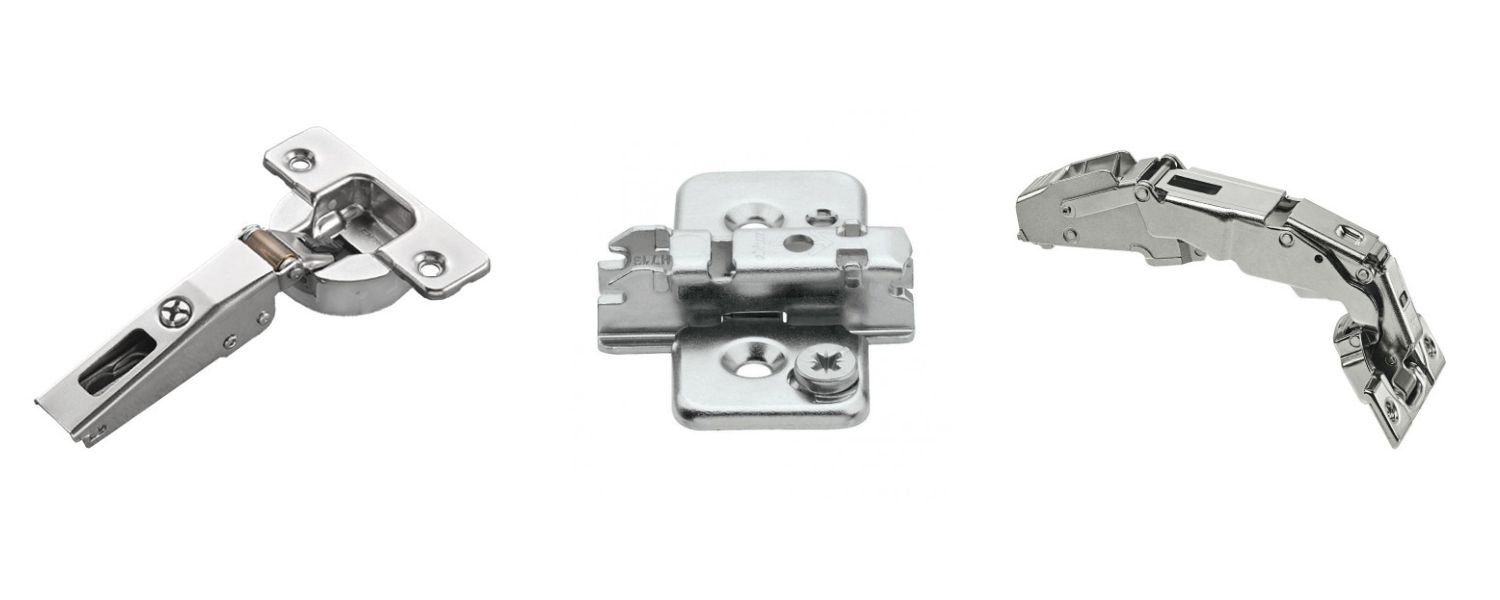
Full Overlay Hinges Explained
These concealed cabinet hinges close with a length of the door that is the width of the cabinet's carcase ‘overlayed’ to fully hide both the body and the hinge from sight. Full overlay hinges from our Blum or Salice brands will have 0mm of cranking.
Half Overlay Hinges Explained
This type is generally utilised when 2 cabinet doors are hung from the same partition in the carcase back-to-back as it were; they need a 9mm or 5mm crank angle.
See an example from the respected Blum brand half overlay hinge on this link.
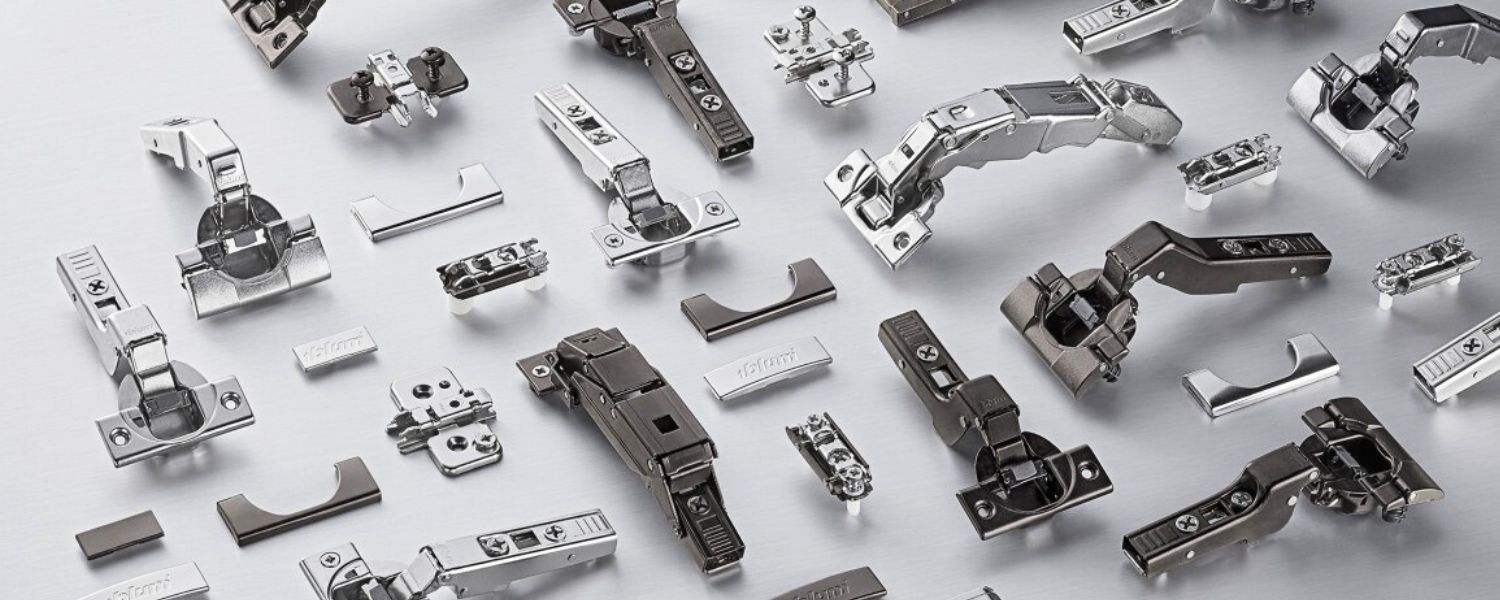
Inset Hinges Explained
Uses for inset hinges might be in the recent trend towards inframe kitchen doors. The doors are ‘inset’ within the side of the cabinet like a picture and glass within a picture frame.
You will generally need a cranking angle of 17mm or 15mm on these models; an example from the Salice range can be seen here.
Blind Corner Hinges Explained
A type of concealed hinge that is utilised where no right-angle cabinet side is available to fix onto with an angle of 95 degrees; available sprung and unsprung with Blumotion soft-close on Blum blind corner hinges.
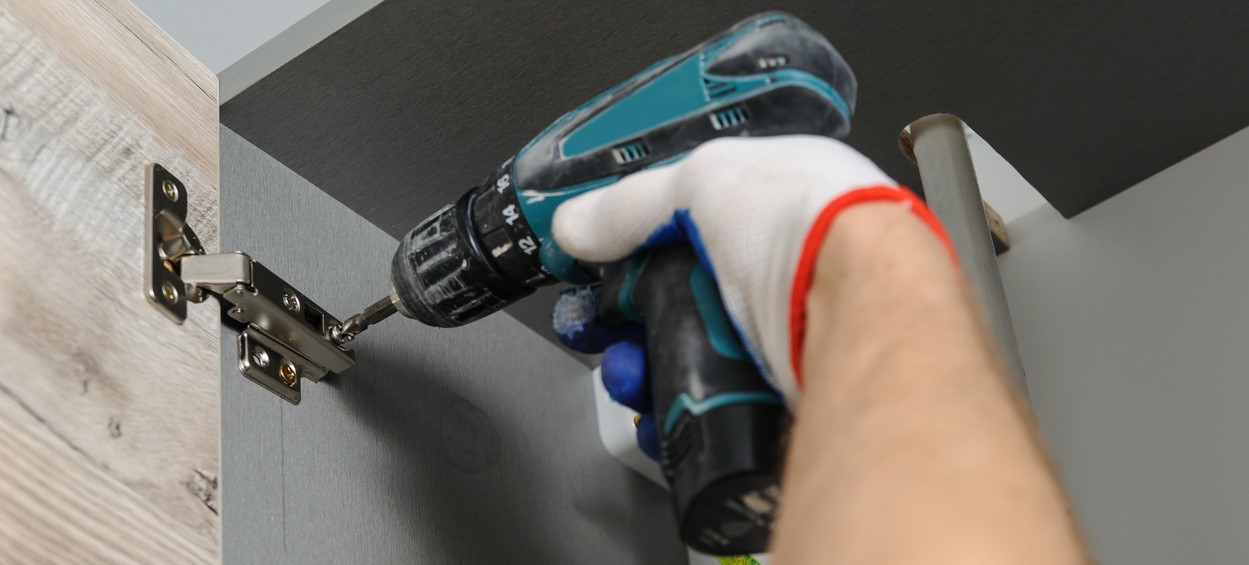
Bi-Fold Corner Hinges Explained
Where a second cabinet door is attached to one that is already fixed to the L-shaped cabinet these hinges are found at the joint of the 2 doors allowing the whole to open smoothly for access.
The Best 2 Brands - From Stock
Blum’s innovative cabinet hinges offer easy assembly and adjustment and reliable action for 200,000 opening and closing cycles. We offer this well-respected brand along with Salice hinges which have elegant design, functionality, and good price point and value for any furniture application.
In the video here we have a tradesman explaining the main types of Blum hinges in a useful way.
From overlay hinges with 110-degree cranks to inset or wide angle opening door hinges, face frame hinges or thick door profile hinges we almost all types in stock and can offer you tips on which are best for your task at hand.

